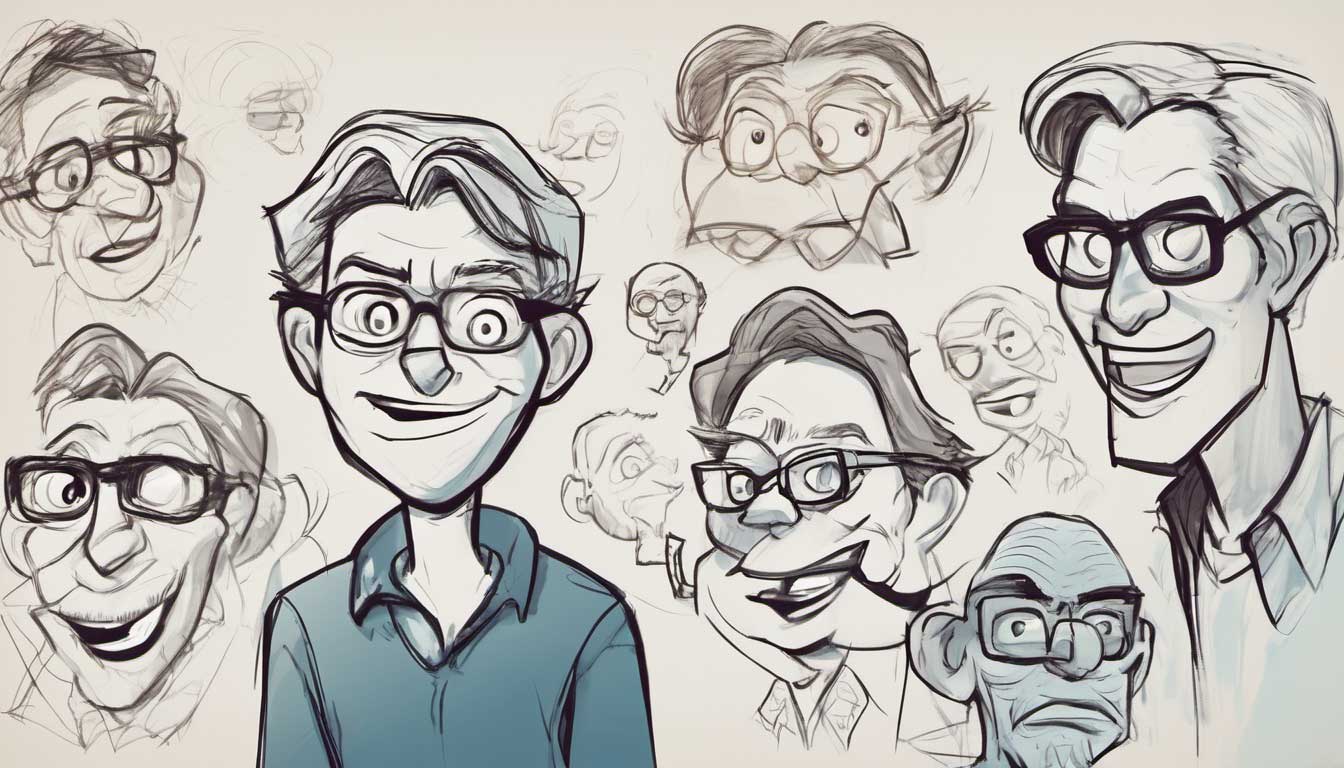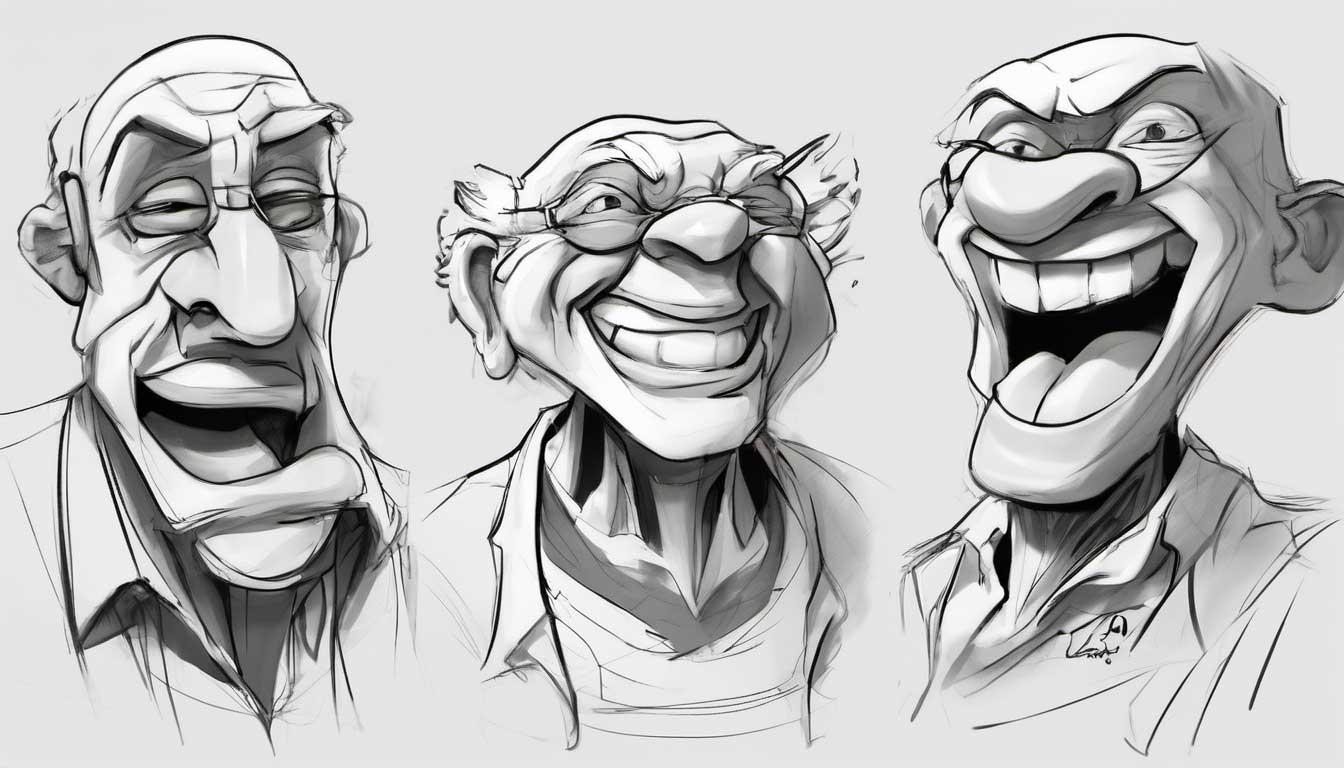Have you ever noticed how a simple change in a cartoon character’s facial expression can completely change the mood of a scene? From joy and laughter to anger and frustration, facial expressions play a crucial role in bringing cartoon characters to life. As a cartoonist, mastering the art of facial expressions is essential for effectively conveying emotions and telling compelling stories. In this article, we will explore the importance of facial expressions in cartooning and provide tips on how to master this essential skill.
The Importance of Facial Expressions in Cartooning
Facial expressions are a powerful tool for communicating emotions in cartoons. They can convey a character’s inner thoughts and feelings without the need for dialogue, making them a vital component of visual storytelling. A well-executed facial expression can evoke empathy, humor, and suspense, making the audience feel more connected to the characters and their experiences.
Furthermore, facial expressions can also add depth and dimension to cartoon characters, helping to distinguish them from one another and make them more memorable to the audience. By mastering the art of facial expressions, cartoonists can create more dynamic and engaging characters that resonate with their viewers.

Understanding Facial Anatomy
Before delving into the intricacies of facial expressions, it is important to have a solid understanding of facial anatomy. Different facial muscles and features contribute to the vast range of expressions that humans are capable of making. By familiarizing yourself with the fundamental components of the face, such as the eyes, eyebrows, mouth, and nose, you can better replicate realistic and expressive facial expressions in your cartoons.
Pay close attention to how these features interact and move in response to various emotions. Observing real-life expressions and practicing sketching different facial poses can help you develop a deeper understanding of how to effectively convey emotions through cartoon character’s faces.
Mastering Facial Expressions
Once you have a solid grasp of facial anatomy, it’s time to start mastering the art of facial expressions in cartooning. Here are some tips to help you elevate your skills:
Exaggerate for Emphasis
Cartoons often involve exaggerating facial expressions for dramatic effect. By amplifying emotions through larger-than-life expressions, you can create more impact and make the emotions of your characters more vivid and relatable to the audience. Experiment with pushing the boundaries of traditional facial expressions to bring a unique and engaging style to your cartoons.
Pay Attention to Detail
Small details in facial expressions can make a big difference in conveying emotions accurately. Pay close attention to subtle changes in the positioning of features, such as the angle of the eyebrows or the curvature of the mouth, as these nuances can significantly enhance the depth and authenticity of your characters’ emotions.
Experiment with Different Styles
Every cartoonist has a unique style, and the same holds true for facial expressions. Experiment with various artistic styles and techniques to find your own voice when it comes to capturing emotions through facial expressions. Whether it’s through bold, exaggerated features or subtle, nuanced expressions, finding the right style that resonates with your artistic vision can elevate your cartoons to new heights.

Common Challenges and How to Overcome Them
Mastering facial expressions in cartooning is not without its challenges. Here are some common obstacles that cartoonists may encounter, along with tips on how to overcome them:
Creating Consistency
One of the challenges of depicting facial expressions in cartoons is maintaining consistency in the characters’ features across different panels and scenes. To address this, consider creating a reference sheet for each character that outlines their various expressions and helps ensure that their features remain consistent throughout your cartoons.
Conveying Subtle Emotions
Subtle emotions, such as contemplation or uncertainty, can be particularly challenging to convey through facial expressions. To tackle this, focus on using small, nuanced changes in your characters’ features to convey these more understated emotions. Pay attention to the positioning of the eyes, mouth, and eyebrows to subtly communicate these complex emotions to your audience.
Overcoming Stereotypes
Cartoon characters often fall into stereotyped expressions based on their personalities or roles in the story. To avoid falling into clichés, challenge yourself to break free from traditional expressions and infuse your characters with unique, unexpected emotions that defy expectations and add depth to their personalities.

FAQs
Q: How important are facial expressions in cartooning?
A: Facial expressions are essential in conveying emotions and telling compelling stories in cartoons. They help to bring characters to life and elicit empathy and connection from the audience.
Q: How can I improve my skills in depicting facial expressions?
A: Practice observing and sketching real-life facial expressions, and experiment with different styles and techniques to find your unique voice. Additionally, study the work of other cartoonists to gain inspiration and insight into mastering facial expressions.
Q: Are there any resources or tools that can help me master facial expressions in cartooning?
A: There are various resources available, including books, online tutorials, and drawing courses that specifically focus on mastering facial expressions in cartooning. Additionally, practicing regularly and seeking feedback from peers and mentors can further help you improve your skills in this area.
Q: How can I avoid making facial expressions appear overly exaggerated or unnatural in my cartoons?
A: Pay close attention to the subtleties of facial movements and seek feedback from others to ensure that your expressions remain authentic and true to the emotions you are trying to convey. Studying real-life expressions and practicing variations of different emotions can also help you strike a balance between exaggeration and naturalism in your cartoons.








+ There are no comments
Add yours